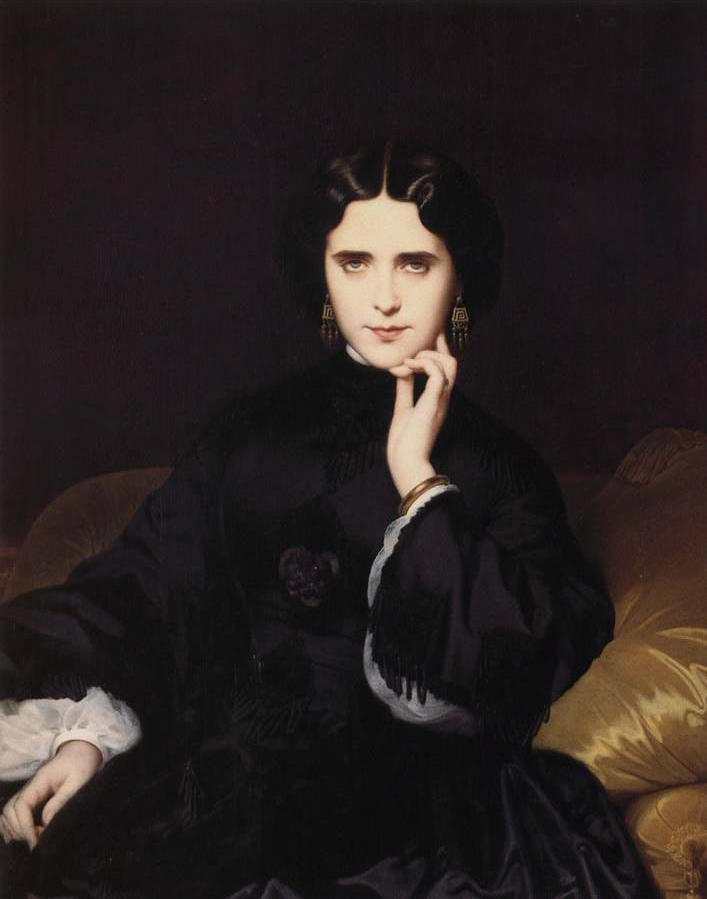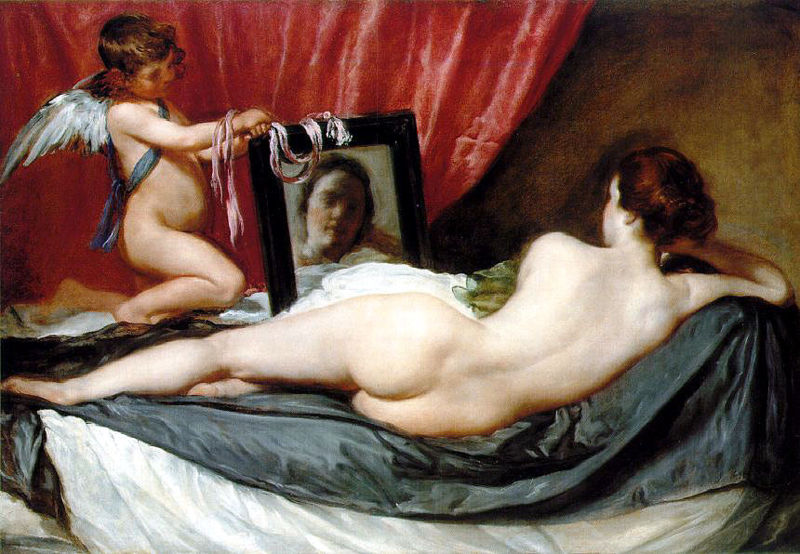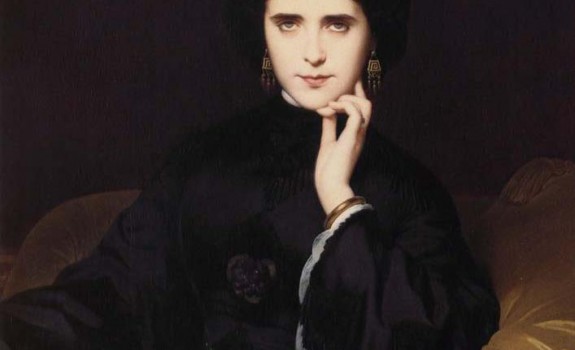
Source Text: Wikipedia & Metropolitan Museum of Art
Source Image: Internet
The Baroque is often thought of as a period of artistic style that used exaggerated motion and clear, easily interpreted detail to produce drama, tension, exuberance, and grandeur in sculpture, painting, architecture, literature, dance, and music. The style began around 1600 in Rome, Italy and spread to most of Europe.
The Baroque style began as somewhat of a continuation of the Renaissance. Later, however, scholars of the time began to see the drastic differences between the two styles as the Renaissance style gave way to Baroque art. Baroque architecture, sculpture, and painting of a dramatic nature were powerful tools in the hands of religious and secular absolutism, and flourished in the service of the Catholic Church and of Catholic monarchies. Baroque art is characterized by great drama, rich color, and intense light and dark shadows. The Baroque artists were particularly focused on natural forms, spaces, colors, lights, and the relationship between the observer and the literary or portrait subject in order to produce a strong emotional experience.
As opposed to Renaissance art, which usually showed the moment before an event took place, Baroque artists chose the most dramatic point, the moment when the action was occurring: Michelangelo, working in the High Renaissance, shows his David composed and still before he battles Goliath; Bernini’s baroque David is caught in the act of hurling the stone at the giant. Baroque art was meant to evoke emotion and passion instead of the calm rationality that had been prized during the Renaissance.
Baroque painting stemmed from the styles of High-Renaissance painters such as Michelangelo, Raphael, Titian, and Correggio. Walter Friedlaender refers to such “elements as interest in verisimilitude and naturalism (often with a strong allegorical content), representations of extreme states of feeling, a desire to suggest extensions into space, dynamic movement, an intense engagement with light (in its physical and spiritual connotations) and a sensitivity to the impact of Classical civilizations, as representing some of the salient features of Baroque art.” Although the era of the seventeenth century is said to be quite ambivalent toward any one style, the Baroque painters exhibited several characteristics in their painting that made it clear that the work was Baroque:
- Painterly brushstrokes
- Recession of the plane
- Open form
- Unity
- Unclearness of subject
Anthony van Dyck (1599 -1641) was a Flemish Baroque artist who became the leading court painter in England, after enjoying great success in Italy and Flanders. He is most famous for his portraits of Charles I of England and his family and court, painted with a relaxed elegance that was to be the dominant influence on English portrait-painting for the next 150 years. He also painted biblical and mythological subjects, displayed outstanding facility as a draughtsman, and was an important innovator in watercolor and etching.
Van Dyck was born to prosperous parents in Antwerp. His talent was evident very early. By the age of fifteen he was already a highly accomplished artist. He was studying painting with Hendrick van Balen by 1609, and became an independent painter around 1615. With the partial exception of Holbein, van Dyck and his exact contemporary Diego Velázquez were the first painters of pre-eminent talent to work mainly as Court portraitists. The slightly younger Rembrandt was also to work mainly as a portraitist for a period.
The oil paint pigment van Dyck brown is named after him, and Van dyke brown is an early photographic printing process using the same color.
“Van Dyck’s brilliant brushwork, graceful arrangement of elegant figures, and seemingly effortless displays of luxurious drapery occasionally make him appear a more superficial master than Rubens. A fair number of the later English portraits, which are often largely by assistants, support this view. However, the lasting importance of direct observation in van Dyck’s art is clear in both the style and character of his autograph portraits. Similarly, a sincere emotionalism lends substance to the seemingly nervous manner of his religious pictures. Perhaps only a temperamental prodigy with astonishing natural talent could learn so much from Rubens and at the same time become a great master of a very different kind.” [1]
The British Royal Collection, which still contains many of his paintings of the royal family and others has a total of 26 paintings. The National Gallery, London (fourteen works), The Museo del Prado (Spain) (twenty-five works), The Louvre in Paris (eighteen works), The Alte Pinakothek in Munich, the National Gallery of Art in Washington DC and the Frick Collection have examples of his portrait style.
Diego Velázquez (1599- 1660) was a Spanish painter who was the leading artist in the court of King Philip IV. He was an individualistic artist of the contemporary baroque period, important as a portrait artist. In addition to numerous renditions of scenes of historical and cultural significance, he painted scores of portraits of the Spanish royal family, other notable European figures, and commoners, culminating in the production of his masterpiece Las Meninas (1656).

From the first quarter of the nineteenth century, Velazquez’s artwork was a model for the realist and impressionist painters, in particular Edouard Manet. Since that time, more modern artists, including Spain’s Pablo Picasso and Salvador Dali, as well as the Anglo-Irish painter Francis Bacon, have paid tribute to Velazquez by recreating several of his most famous works.
Michelangelo Caravaggio was an Italian painter active in Rome, Naples, Malta, and Sicily between 1592 and 1610. His paintings, which combine a realistic observation of the human state, both physical and emotional, with a dramatic use of lighting, had a formative influence on Baroque painting.
Caravaggio trained as a painter in Milan under Simone Peterzano who had himself trained under Titian. In his twenties Caravaggio moved to Rome where there was a demand for paintings to fill the many huge new churches and palazzos being built at the time. It was also a period when the Church was searching for a stylistic alternative to Mannerism in religious art that was tasked to counter the threat of Protestantism. Caravaggio’s innovation was a radical naturalism that combined close physical observation with a dramatic, even theatrical, use of chiaroscuro which came to be known as tenebrism (the shift from light to dark with little intermediate value).
Caravaggio’s innovations inspired the Baroque, but the Baroque took the drama of his chiaroscuro without the psychological realism. While he directly influenced the style of the artists mentioned above, and, at a distance, the Frenchmen Georges de La Tour and Simon Vouet, and the Spaniard Giuseppe Ribera, within a few decades his works were being ascribed to less scandalous artists, or simply overlooked. The Baroque, to which he contributed so much, had evolved, and fashions had changed, but perhaps more pertinently Caravaggio never established a workshop as the Carracci did, and thus had no school to spread his techniques. Nor did he ever set out his underlying philosophical approach to art, the psychological realism which can only be deduced from his surviving work.
In the 1920s, art critic Roberto Longhi brought Caravaggio’s name once more to the foreground, and placed him in the European tradition: “Ribera, Vermeer, La Tour and Rembrandt could never have existed without him. And the art of Delacroix, Courbet and Manet would have been utterly different”. The influential Bernard Berenson agreed: “With the exception of Michelangelo, no other Italian painter exercised so great an influence.”
[1] Citation: http://www.metmuseum.org/toah/hd/rvd_p/hd_rvd_p.htm

